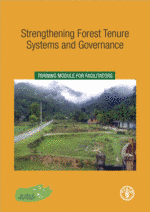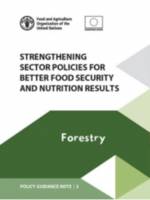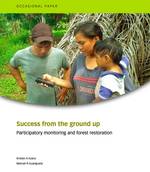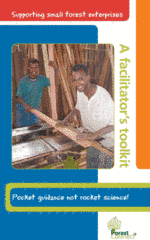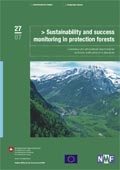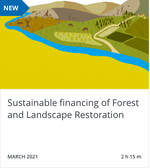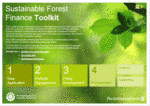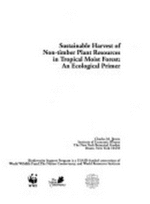الأدوات
الأداة هي مصدر يوظف لدعم تنفيذ الإدارة المستدامة للغابات وتوجيهها. ويشتمل هذا القسم على جميع الأدوات المتاحة في مجموعة أدوات لإدارة المستدامة للغابات التي قد تكون على شكل إصدارات أو مقاطع فيديو حول التعلم الإلكتروني أو برمجيات وما إلى ذلك.
بوسعكم تصفح "الأدوات" من خلال كتابة كلمات أساسية في مربع البحث المجاني أو بإمكانكم تضييق نطاق البحث باستخدام فلاتر موجودة على الجانب الأيمن من الصفحة.
Forest management worldwide has undergone substantial changes over the past decades, including a gradual move away from state forest control towards participatory and local forest management.
Ownership and access to forest resources, initially state-dominated, are becoming more diversified, allowing a wider range of actors to participate in forest management. This shift...
Forests have the potential to contribute to food security and nutrition in a number of ways. They are a source of food and they provide woodfuel for cooking, income, employment and ecosystem services that are essential to support agricultural and fishery production. Despite this potential, most often the existing forestry...
New global forest restoration initiatives present an unparalleled opportunity to reverse the trend of deforestation and forest degradation in the coming years. This effort will require the collaboration of stakeholders at all levels, and most importantly the participation and support of local people. These ambitious restoration initiatives will also require...
Supporting small forest enterprises. A facilitator's toolkit. Pocket guidance not rocket science.
2012
2012
The goal of this toolkit is to help supporters of small and medium forest enterprises (SMFEs) work more effectively. This toolkit is directed to "facilitators", for example donors at the international level and, most importantly, government extension services and non-governmental organizations (NGOs) at the national level. Although this publication has...
Forests often protect people and material assets from natural hazards, by preventing hazards or by reducing their impact. Protection forests are delineated on the basis of an assessment of the hazard potential, the damage potential and the potential effect of the forest. Deciding on the protective status of a forest...
Restoration is more complex than just planting trees. It requires that farmers, rural communities, businesses, and government agencies—all with different interests—unite behind a shared vision. Establishing common goals and measuring progress facilitates deeper collaboration among diverse actors. The World Resources Institute, together with the Government of El Salvador, the Regional...
To meet countries’ national commitments to restoring degraded landscapes, adequate public and private investments are needed to support the different steps of the FLR cycle. Financing sources are more efficient when used in a coordinated way.
This course has been developed to improve the awareness and capacities of practitioners and...
This Toolkit has been developed jointly by PricewaterhouseCoopers (PwC) and the World Business Council for Sustainable Development (WBCSD). It is a globally applicable resource designed to help financial institutions support the management of forest resources through sustainable and legal timber production and processing, and markets for carbon and other ecosystem...
This report is an evidence-based, comprehensive analysis of the diverse, direct and indirect,
contributions of forests and trees to FSN. Chapter 1 examines the linkages between forests
and FSN and proposes, for the purpose of this report, a conceptual framework and a forest
typology grounded on management criteria. Chapter 2 provides an in-depth...
Sustainable harvest of non-timber plant resources in tropical moist forest: an ecological primer
1994
1994
This publication is still the best available general introduction to aspects related to the sustainable harvest of NTFPs. It provides a subset of necessary tools and is a "tool box" that provides simple and effective methods in determining sustainable harvest levels of NTFPs in tropical moist forests. The manual has...

